U2:UV Achtung Baby Live At Sphere - inside the tech behind the greatest show currently on earth
U2 have just launched their 25-night live, visual and sound sensoria that pops eyes and boggles minds. Here’s how they do it
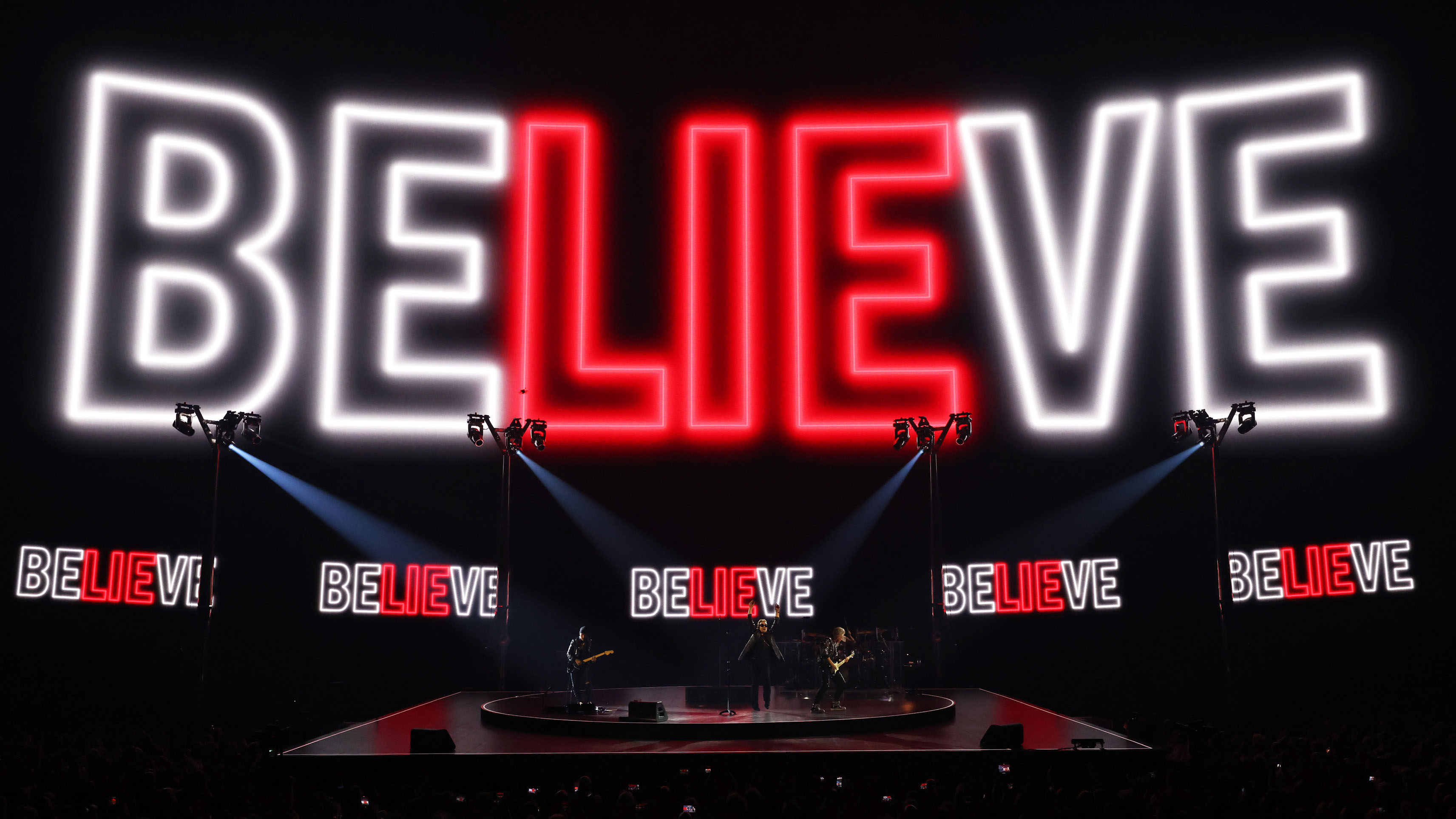
Just when you thought it was safe to draw a line on U2’s horizon, they’ve only gone and done it again. While their recorded work has grown less vital over the last couple of decades, U2’s limitless ability and drive to put on a good show continues to set the pace.
Their latest live exploit - U2:UV - takes place at a single venue with U2 fans required to go on tour to locate the band, rather than the other way round. But being rooted to the spot has enabled a show that has allowed U2’s famous zest for live to be taken to the next level and with the band themselves currently resting on laurels and celebrating the 30th-ish anniversary of 1991’s fan favourite Achtung Baby rather than promoting a new LP, it makes sense for them to let a stage show take the strain rather than touring as their own tribute act.
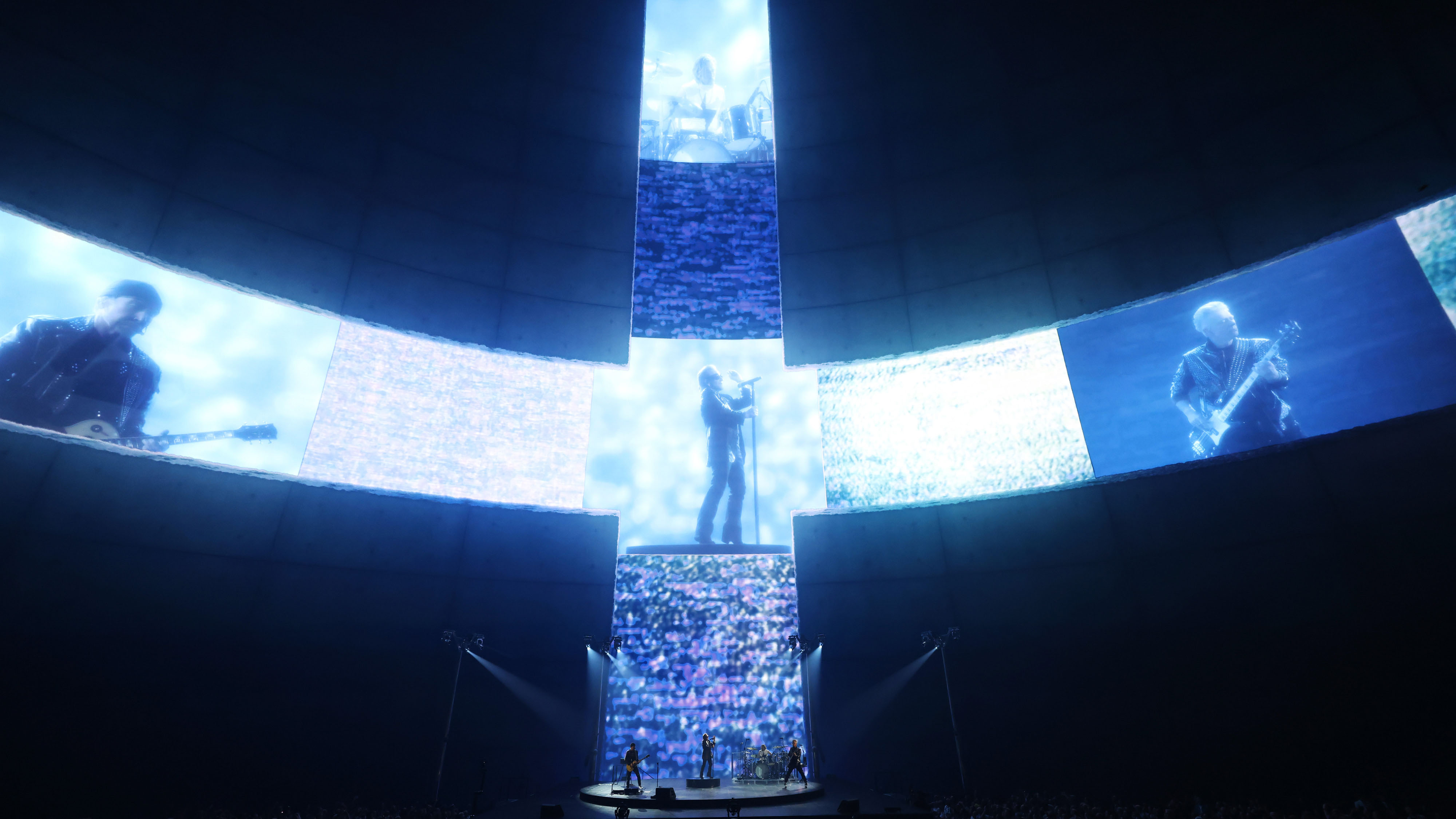
The story goes that U2 trousered $10 million upfront for the pleasure, but that was back when the plan was for just five gigs. 25 gigs? You do the math
U2:UV Achtung Baby Live At Sphere (to give the ‘tour’ its full name) is - fittingly enough for its Las Vegas location - a residency very much in the vein of those previously wallowed in by Elvis Presley and Tom Jones, and a payday more recently given a bling reboot by the likes of Celine Dion, Britney Spears, Lady Gaga, Usher, Adele and - coming soon - Kylie Minogue.
Vegas residencies make sense when an artist has the draw to make their audience come to them for a change and for those fans to be sufficiently minted and gig-weary that they’ll pay over the odds for an experience that’s that bit more special. Meanwhile, the artist enjoys a bumper, easy-money career swansong, being wheeled from luxury condo to stage and back every night (twice on Sundays) cranking out the hits while breaking zero touring sweat.
U2 have entered the building
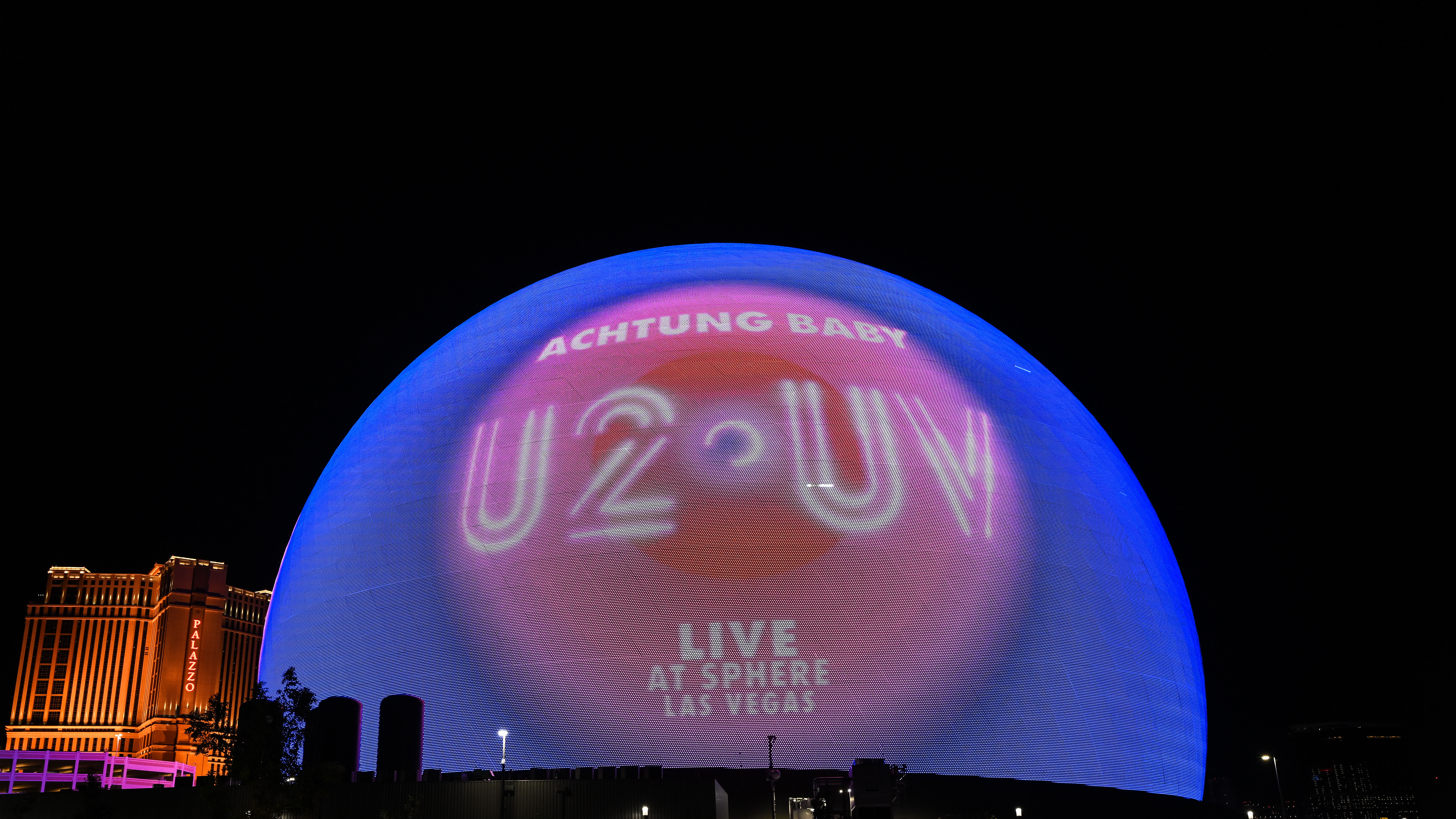
But U2’s residency, live and direct from pop’s coffin, is proving a markedly different money-spinner from those that have gone before it. Kicking off just a few days ago the gig has a limited run, being just 25 gigs having already been extended twice due to fan demand. The story goes that U2 themselves trousered $10 million upfront for the pleasure, but that was back when the plan was for just five gigs. 25 gigs? You do the math.
But before we get to what happens at virtual curtain up, let’s set the scene with U2’s brief history of live…
U2’s rep for a rocking live set really started with 1983’s US Live At Red Rocks: Under A Blood Red Sky, in which the up-and-coming post-punkers proved their chops in a dramatic open-air gig, live from Red Rocks natural amphitheatre in Colorado, United States.
Want all the hottest music and gear news, reviews, deals, features and more, direct to your inbox? Sign up here.
Their perfect performance and expert timing tee’d up a lengthy career with international appeal. An all-the-hits-so-far live performance broadcast globally on ‘yoof’ TV eager for any music content won the war with MTV, and broke the mould, being shoveled out in the nascent home video market alongside the obligatory LP and cassette.
But it was 1992-to-1993’s ZooTV tour, making real the wall-tumbling Euro-reunification zeitgeist of their Achtung Baby album that really whetted the band’s appetite for multi-sensory, stadium takeovers.
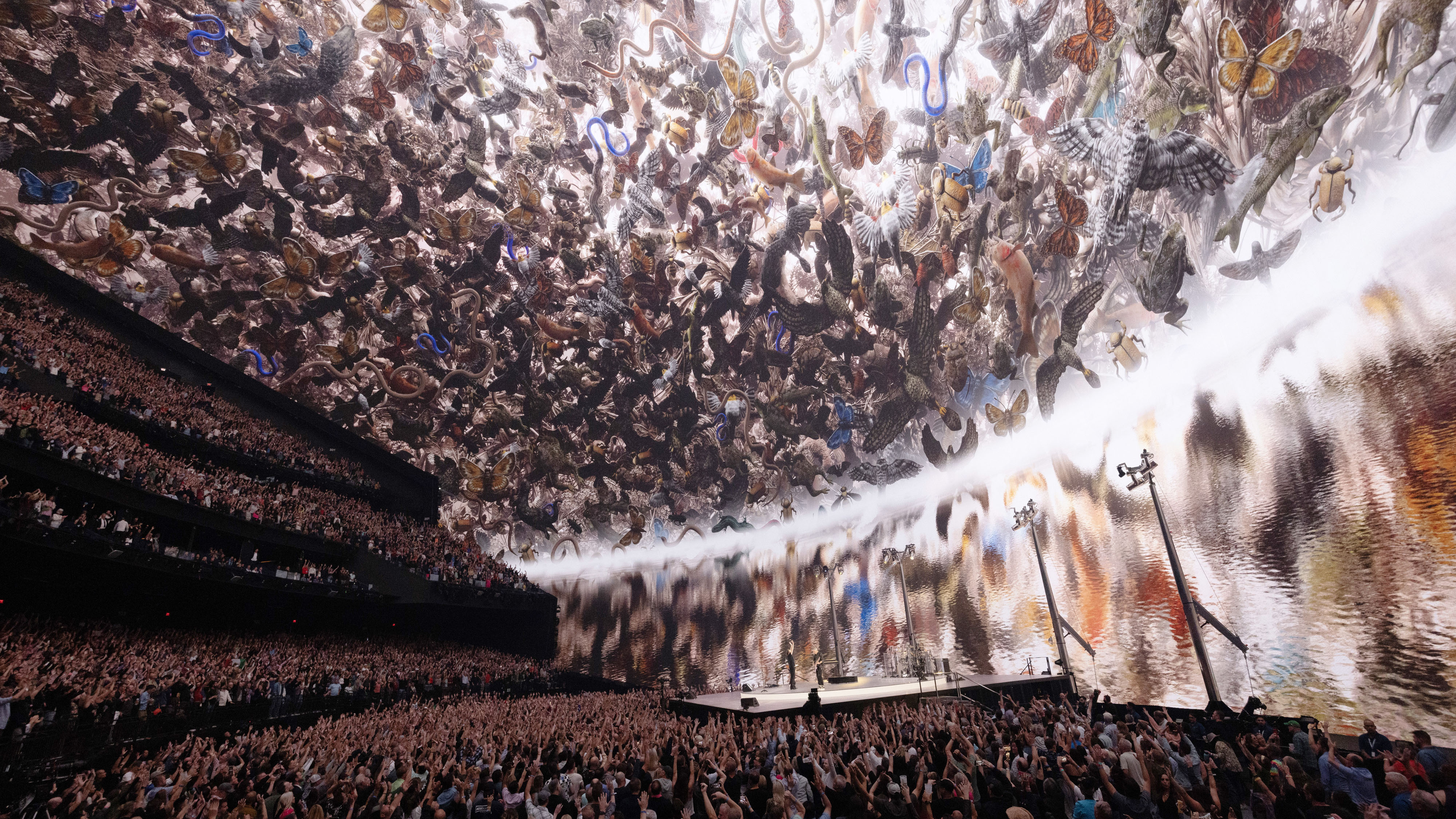
For ZooTV the audience were gifted not just a gig, but a performance where the venue and the constructs within it meant that the band and the music were barely on 50% of what was going on each night. 1997s PopMart Tour took the same formula to the next level (this time with a gigantic mirrored lemon and more than a nod to the dominance of dance).
2009’s 360° tour (best remembered as The Claw tour) basically morphed into a greatest hits re-run of the same ‘takeover’ rationale with a simpler (but no less dramatic) single, in-the-round claw structure offering all attendees in every city the same experience night after night. However, due to the sheer size of the thing it limited the amount of venues that could hold it, simultaneously satisfying U2’s ‘Desire’ to cater for more people via less gigs, but delivering a less bespoke and in-your-face experience than previously.
Finally for 2015’s iNNOCENCE + eXPERIENCE tour the band seemed at a loss with what could be done next. With two lacklustre ‘themed’ albums to promote, the excitement for this global jaunt came from a complex, above-the-audience double-sided TV sandwich, allowing the band to cross between two stages and get closer to every part of the audience than ever before (while simultaneously always obscuring a view of the band for the majority of them). The show is also notable as the first that featured a halftime interlude so the boys could get their breath back.
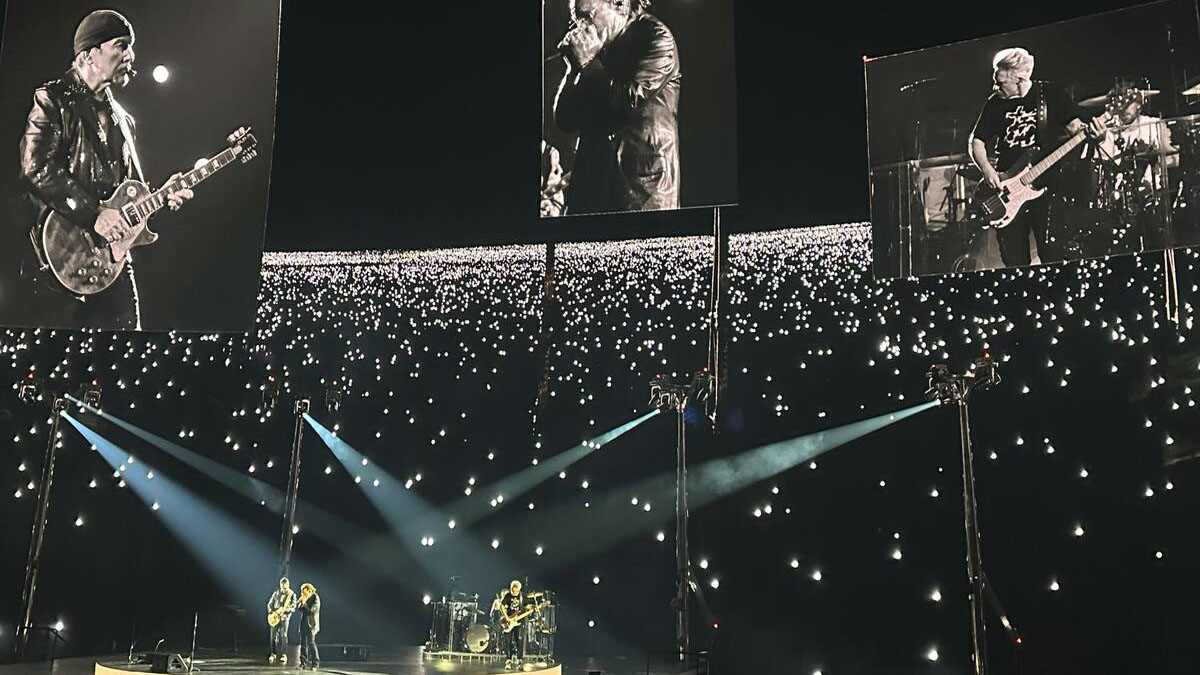
Now, instead of having just days to perform set up before curtain up, the band’s team have spent the past two years planning and building a show that can only ever exist in one place
Thus the scene was set for Sphere - a show which both builds on and neatly puts the band’s live extravaganza into a single manageable space that lets them deliver the tried and tested goods on their own terms. Rooted to the spot in Las Vegas, the band can predictably and reliably perform a stunning, perfect-every-time, controlled show night after night without having to park on a portaloo, sleep on a bus or even pack a bag.
And thanks to not having to pack the whole kit-n-kaboodle onto trucks at the end of the show (their ‘Claw’ tour famously featured THREE ecology-crushing stage sets chugging around the world simultaneously in order to make the band’s night by night deadlines) the show can be visually wilder and larger than ever.
Now, instead of having just days to perform set up before curtain up, the band’s team have spent the past two years planning and building a show that can only ever exist in one place. It’s no wonder therefore that perhaps more than any U2 live experience before that this one goes that extra mile.
Even Better Than The Real Thing

The show’s location, Sphere, stands 112 metres high and cost $2.3 billion to make real. From the outside, while it’s clearly impressive, its name seems disingenuous, looking more like a burst football than anything genuinely spherical. However, inside the structure, its curved floor dips, digging into the ground in a huge 100-metre-wide bowl with the 157 metre-wide external structure merely the cap upon it.
The completely internally spherical structure therefore not only allows colosseum-style ‘in the round’ gig experiences but the ability to put the show above, behind and below the audience simultaneously with every seat for its 17,500 capacity effectively becoming the best in the house.
The Sphere’s real trickery comes by virtue of its 16K resolution screens which literally line the inside of the dome across 15,000 square metres, delivering photorealistic images wherever an audience member may gaze.
Meanwhile, the outer structure is similarly draped too, and while the external resolution dips to 19,000 by 13,500 pixels, the fact that this screen covers 54,000 square metres - teasing the contents of the show for those unlucky enough to be left outside and being the single largest display on earth - more than makes up for it.
U2:UV uses super-hi-def 360-degree footage to place the audience in a variety of real-world locations, and uses pre-rendered graphics to place them anywhere else besides. For Even Better Than The Real Thing the sky and walls fill with Vegas iconography, from Elvis to Nicholas Cage, while Where The Streets Have No Name brings the outside in as we're transported to an epic desert landscape. The familiar battle-worn band now effectively exists, pulsing and throbbing within an all-new digital skin.
It’s the miracle of the modern TV home cinema soundbar on speed. The venue’s audio designers are able to place sound so it appears to come from its source via an incredible 167,000 individual speaker drivers
Most notable however is the use of a hidden beam-forming sound system where sound is projected and only becomes audible at the intersection of matching sound from another speaker. It’s the miracle of the modern TV home cinema soundbar on speed. The venue’s audio designers are able to place sound so it appears to come from its source via an incredible 167,000 individual speaker drivers.
Based on Holoplot's X1 Matrix Array sound system there are 1,586 permanently installed speakers and 300 mobile modules able to physically move and project sound when absolute accuracy is required and wave field synthesis trickery isn’t up to snuff. Incredibly, 99 percent of the system is hidden behind the LED screen meaning that there’s never any sense of where the sound is coming from. Instead, the system is able to place sound at any image on the dome’s surface or at any point within it, be it Bono’s mouth, Adam’s bass, The Edge’s guitar or the drums of Dutch drummer Bram van den Berg from the band Krezip who’s standing in for Larry Mullen Junior while he recovers from surgery.
Meanwhile, the band perform centre stage on ‘Turntable’ - a vast, Stufish-designed set, inspired by the smaller, less ostentatious Brian Eno art installation of the same name. Its base is – you guessed it – yet more LCD 16k screens allowing the band to at once stand on an island or appear to disappear into the void of the backdrop depending on each song’s theme and setting.
The visuals expertly mapped to each song are the product of different visual artists. Marco Brambilla provides the Vegas imagery, John Gerrard lends his Flag series of movies to the show and longtime U2 collaborator Es Devlin chips in footage of endangered species from his work Nevada Ark.
And as if that wasn’t enough, there are numerous 4D systems at play with wind whistling around the completely sealed structure, smells being magicked from nowhere and haptic vibrations built into the venue's 10,000 seats. Should the audience feel the need to sit in them.
Mysterious Ways
But while U2’s latest show’s debut has won universal praise, it’s worth remembering that the vast majority of the hard work is being done entirely non Bono. While Sphere has, these last few days, caught the world’s imagination thanks to U2’s creativity, it’s actually a physical, permanent structure designed to house exactly the kind of sensory overload that U2 are using for its opening workout.
Sphere is the creation of James Dolan, the executive chair of Madison Square Garden and owner of the New York Knicks and Rangers. The story goes that alongside MSG Ventures CEO David Dibble the pair worked to devise a new kind of venue able to deliver a new kind of experience and give the increasingly tired and obvious Vegas residency business a new home and a gig experience that goes beyond Elvis-style chicken-meets-basket matinee for shows really worth attending.
Thus, much like when the bible pounced on the printing press, or when porn and ET collectively popped a video recorder in every home, U2 are - like the time they gave an album to millions of people who didn’t want it - simply availing themselves of the next tech drifting into their line of fire.
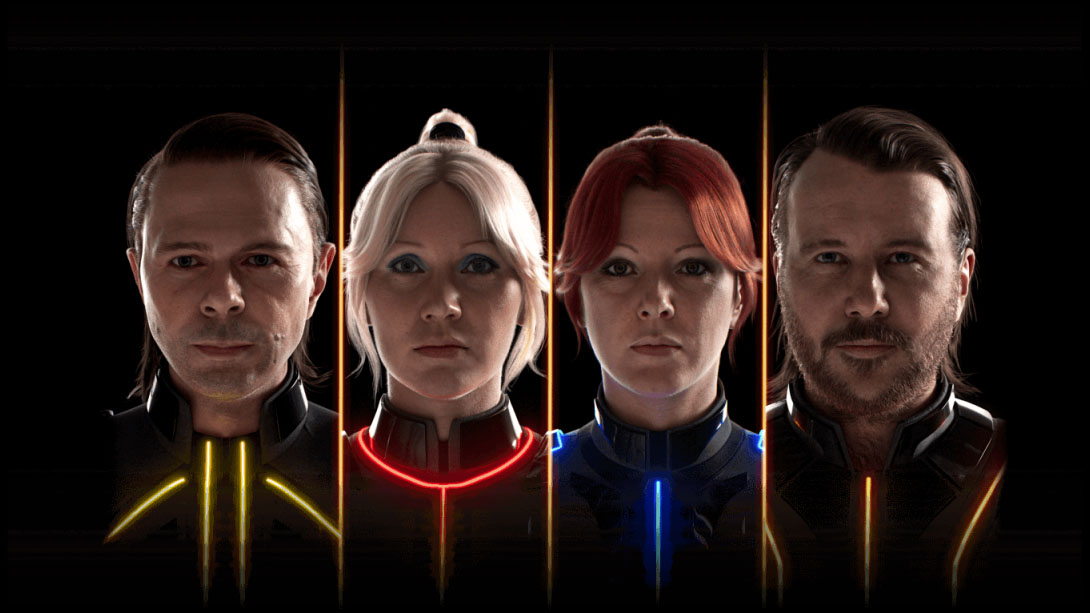
So while ABBA constructed their own purpose built, temporary venue at the Queen Elizabeth Olympic park in London in order to house the specifics of their critically acclaimed virtual Voyage gigs (a temporary structure whose future at the end of their run in 2024 is uncertain) U2 are simply pitching up and saying “Nice multi-sensory delivery system - we’ll take it.”
And given the ability to show the audience photorealistic ‘anything’ and make sound (and even smells) appear from anywhere it’s easy to envisage the Sphere presenting experiences that don't require the presence of an artist at all.
We imagine that there are multiple Elvis Live In Vegas shows in the planning stage right now whose principle stumbling block isn’t the technology to make the experience seem real, but whether there’s a sufficiently savvy and affluent Elvis 2023 market to make such an endeavour worthwhile.
And as to what will happen when U2’s run ends? Who knows where their drive for the next level may take them, but it’s safe to say, all this trouble for 25 gigs? Given the plaudits that the show has obtained thus far and that The Claw ground on for 110 nights, we reckon U2 will have a hard time leaving this city of blinding lights.
Daniel Griffiths is a veteran journalist who has worked on some of the biggest entertainment, tech and home brands in the world. He's interviewed countless big names, and covered countless new releases in the fields of music, videogames, movies, tech, gadgets, home improvement, self build, interiors and garden design. He’s the ex-Editor of Future Music and ex-Group Editor-in-Chief of Electronic Musician, Guitarist, Guitar World, Computer Music and more. He renovates property and writes for MusicRadar.com.
